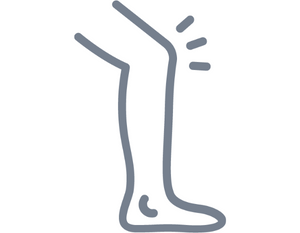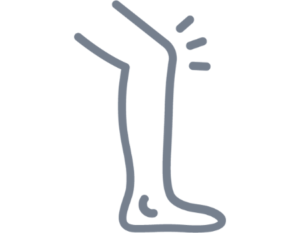
Knee Osteoarthritis

Knee Osteoarthritis

Reduce knee pain from osteoarthrits with a safe, effective outpatient procedure
What is osteoarthritic knee pain?
Osteoarthritis (OA) is the most common form of arthritis, affecting millions of people worldwide. It occurs when the protective cartilage that cushions the ends of the bones wears down over time.
OA occurs when the bones of the joints rub against one another without the shock-absorbing benefits of cartilage. The rubbing results in pain, swelling, stiffness, and decreased ability to move. Osteoarthritis is one of the most common causes of disability, limiting the daily activities of 40% of all U.S. adults.
Knee pain from OA is usually treated with anti-inflammatories and joint injections. In severe cases, the knee joint is replaced using an open surgical procedure.
What is genicular artery embolization (GAE)?
GAE reduces inflammation in the knee to improve function and quality of life for people with moderate to severe knee pain. After GAE, many patients who initially could walk only three or four blocks are able to walk for miles. Some are able to do away with walking aids, such as canes, while others report being in a better mood now that they are living without pain.

GAE eliminates abnormal blood flow in the lining of the knee joint (synovium) to reduce inflammation. It quickly improves patients' pain. Patients see benefits as soon as three days after the procedure. According to a recent study, average pain scores decreased from 8 out of 10 before GAE to 3 out of 10 within the first week. Over 70% of patients had a greater than 50% reduction in pain scores one year after the procedure.
how is gae performed?
Much of the pain experienced in osteoarthritis comes from abnormal blood vessels that form in the joint lining. GAE works by blocking these abnormal blood vessels, causing inflammation to subside. GAE is performed by interventional radiologists, doctors specially trained to do minimally invasive vascular procedures.
During GAE, a doctor positions a catheter through a small needle puncture in the leg and into the blood vessels that supply the joint using x-ray guidance. Once placed, tiny microsphere particles are slowly released to slow the blood supply to the joint. Following this procedure, patients usually experience dramatic pain relief.
what happens after the gae procedure?
Recovery from GAE is very fast. There is only a tiny incision and no significant pain after the procedure. Patients can expect to go home an hour after the procedure.
am I a candidate for gae?
GAE is a non-surgical treatment alternative for patients with significant knee pain due to osteoarthritis who have failed conservative therapy, such as anti-inflammatory medications or knee injections. It is a great option for those who do not wish to undergo, or are ineligible for, knee replacement surgery.
Patients should consider GAE if they:
- Are 40-80 years old
- Have moderate to severe knee pain
- Have local knee tenderness
- Failed conservative management (NSAIDS/PT/Joint Injection)
Here's what you can expect from your visit:
- CONSULTATION: Symptom review and health history discussion.
- IMAGING: Recent MRI.
- TREATMENT PLAN: A comprehensive review of all symptoms, exams and imaging enable our physicians to provide definitive treatment recommendations. Ultimately, patients choose their preferred option.

